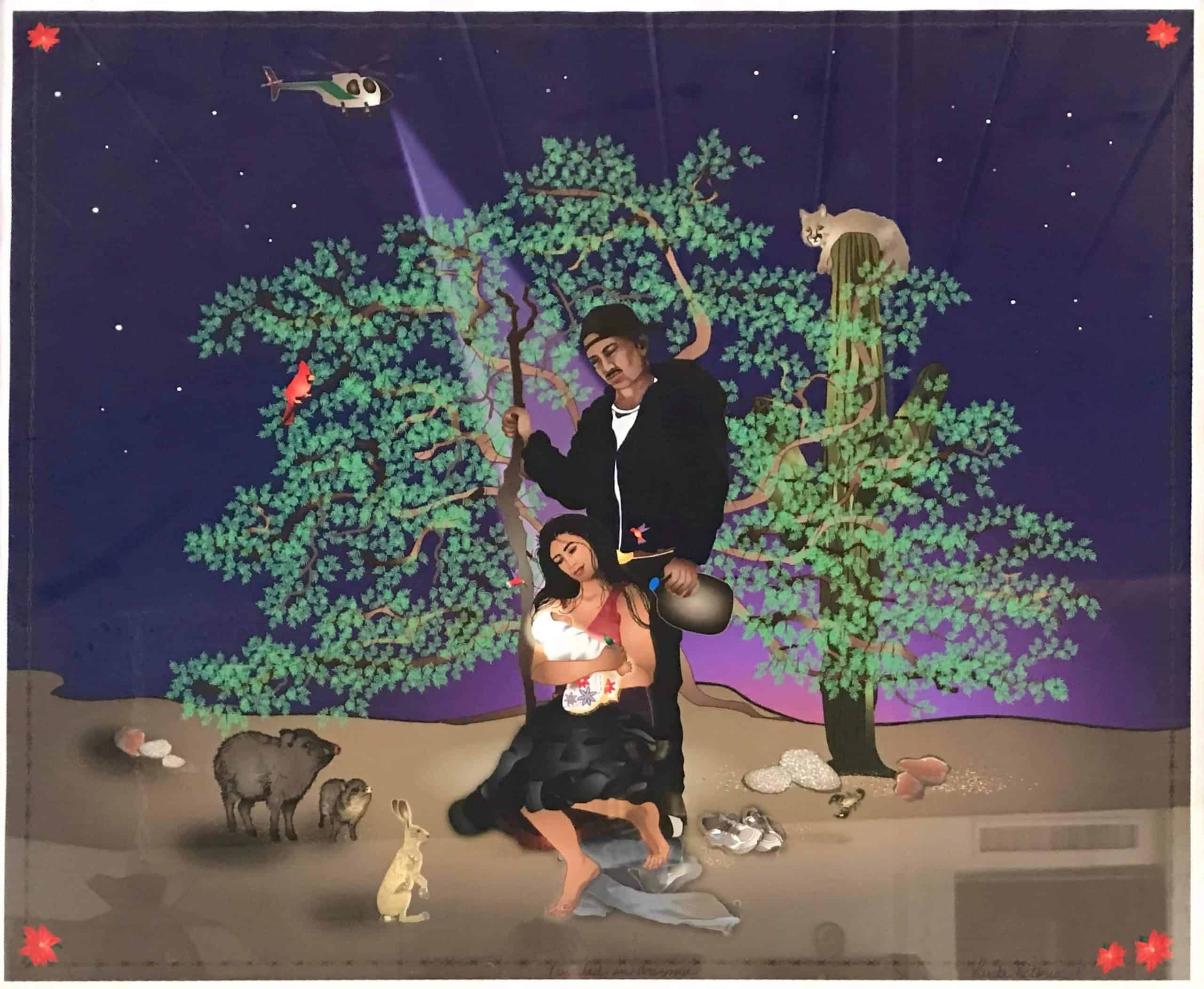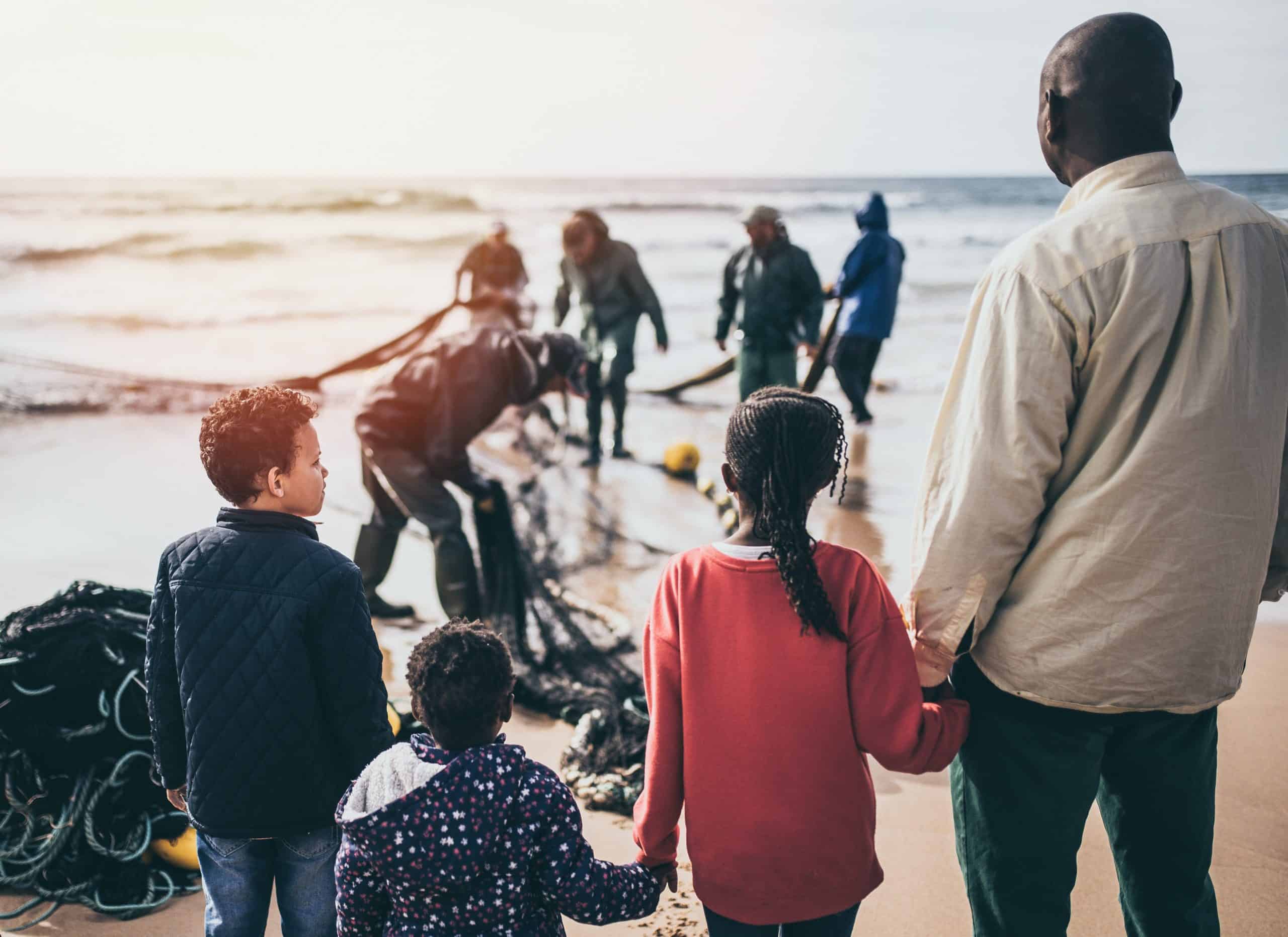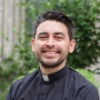Gaze – Listening – Understanding
A friendly gaze
is the most humane way to be present
in the life of those who are going through the harshness of deserts
Attentive listening
is the most disinterested way to be light
in the lives of those who live in times of darkness
Sincere understanding
is the most divine gesture of valuing people
who live in disappointment and despair
(Unknown Author)
During my first year at the Jesuit Novitiate of the West Province,I made a poverty pilgrimage along the US-Mexico border in April of 2018, and my first stop was the Kino Border Initiative (Kino) in the border city of Nogales. On the twelfth and final day of my stay in Kino, I was given the above poem by a Missionary Sister of the Eucharist. The words gaze, listening, and understanding resonated deeply in my heart as they reminded me of the many names, faces, and stories of the migrant and refugee population I have encountered throughout my life before entering the Jesuits.
From 2005 to 2017, I was involved with young adult ministry in Spanish-speaking parishes in CA working mainly with migrants from Mexico and Central America. My experience in this ministry was twofold. First, I experienced the poem’s words as others listened and understood my story. Then, I felt invited to accompany the migrant population in the US with a gentle gaze, a listening heart, and an understanding mind. I learned about the stories of men, women, and young people fleeing gang violence, organized crime, extreme poverty, and political conflict. My story was not so different from theirs, and as we journeyed together, they helped me embrace my family’s migrant and refugee story.
My family applied for asylum in 1999, and I arrived in the US in 2000 to reunite with my mother. I was born in Nicaragua in the 1980s–in the middle of the Contra War–right after the Nicaraguan revolution. Some of my family members died during that time. Family members were getting drafted to continue fighting in the country’s revolution, and the economy was becoming so dire that food became scarce as days passed. My mom and aunts decided to leave the country in 1988. I was left under the care of my grandmother while my mother made her journey to the US. She faced all sorts of dangers and abuses, her journey took two years before she reached the US.
During my stay at Kino, I noticed a colorful painting that depicted my mother’s story before crossing the US-Mexico border. At the time, my mother was by herself, holding my one-year-old sister in her arms, and instead of a helicopter, the Customs and Border Patrol were riding a horse. My mom was only 22 years old.

But the stories I heard at the Kino women’s shelter left a more profound imprint in my heart. It was like I was looking and listening to my mother as I looked at a 19-year-old Flor from Oaxaca and 27-year-old Rosa from Veracruz, both women that came from indigenous communities and left their families due to extreme poverty and violence. There were also the stories of Elena, 19, Maria, 20, and Laura, 25, three young women from Guerrero fleeing from Mexican cartels’ extreme violence and killings. One of them described how butchered bodies were often found on the street corners of her town and how she decided to leave because she did not want to end up like them. On her journey, she managed to escape being raped by smugglers and later captured by border patrol and felt treated like a criminal. As I gazed at their eyes and listened to their stories, I could feel their pain, and the most comforting thing I could do was to value their stories and be present to them.
As I continued my poverty pilgrimage, I ended up in Casa del Migrante in Tijuana. I met people from many places in Latin America, but the stories that struck me the most were of the men from Africa. Two of them, Abraham and Rudi, in their late teens, from Algeria, Africa, have had a yearlong journey as they moved from South America, through Central America, and lastly through Mexico. They faced natural walls like the jungle between Colombia and Panama (the Darien Gap) and border walls.
I met another young man named Francis, from the Democratic Republic of Congo, seeking political asylum due to his human rights activism. Unfortunately, the consequences of his endeavors to protect the human rights of others were the assassination of his sister as he nearly escaped being killed with a machete. In addition, his family was harassed to the point of needing to relocate. The three men were seeking asylum either in the US or Canada. As we parted ways, we hugged each other, and our gaze exchange expressed gratitude for the time spent together at the shelter.
The pilgrimage through the shelters along the border was a profound experience of the Spiritual Exercises that deepened my faith commitments. A faith that sees the goodness around me and is not afraid to face the suffering. A faith that is not static but seeks to engage, encounter, and find Christ in the marginalized in the midst of the diverse social context of today’s world. A faith that seeks transformation.
Both the Spiritual Exercises and my poverty pilgrimage have highlighted three important aspects of what it means to do migrant and refugee ministry. First, is the importance of humanizing by engaging and becoming present as we put aside our agendas. Second, as we encounter the vulnerable, to accompany them by listening to their stories and letting them know that their stories matter and are real. Lastly, to allow Christ to affect our lives as we value the inherent dignity that each person possesses as children of God. A gentle touch that tugs our hearts and complicates our responses towards the vulnerable as we ask the Lord: Where will this experience take me?
In my case, my heart continues to be led by the Spirit to walk with the excluded, particularly the migrant population. I hope we are also inspired to engage, encounter, and find Christ in the migrant population in our cities or at the border with the stories I shared. A starting point could be to learn more about World Refugee Day, which has been observed every June 20th by the International Community since 2001. This is an observance day that the Catholic Church has had since 1914 as the World Day of Migrants and Refugees, in which the Pope invites us to reflect on the realities and our attitudes towards our migrant and refugee brothers and sisters.
I end with a phrase from this year’s message of Pope Francis for the 108th World Day of Migrants and Refugees:
“We are called to renew our commitment to building a future that conforms ever more fully to God’s plan of a world in which everyone can live in peace and dignity.”
I pray that the Lord grant us the grace to provide a friendly gaze, an attentive listening heart, and a sincere understanding towards all those who find themselves in the margins of society.
-//-
*Names have been changed to protect identities.
Header photo by Eric Masur on Unsplash.


